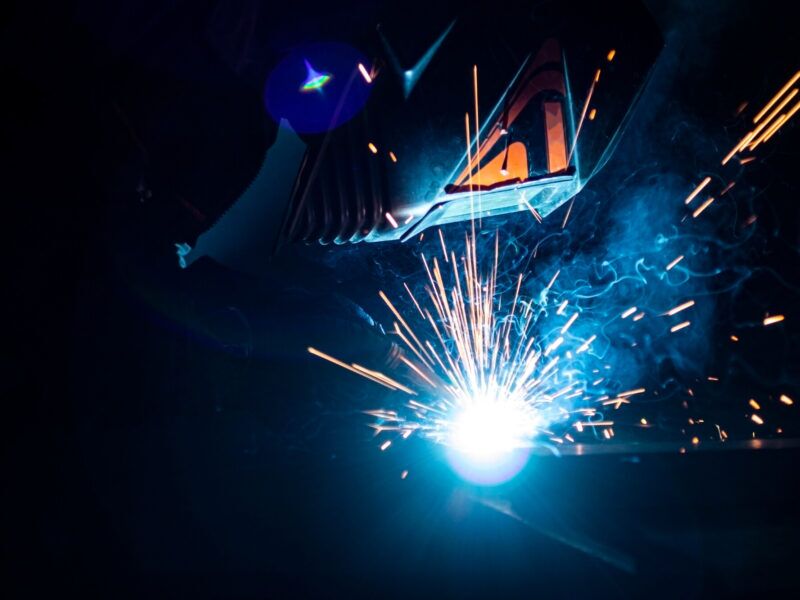Your Full Handbook to Preventing Weld Undercut Like a Pro
Your Full Handbook to Preventing Weld Undercut Like a Pro
Blog Article
Grasping the Art of Welding: Just How to Stay Clear Of Undercut Welding Issues for Flawless Manufacture Results
By recognizing the root triggers of undercut welding and executing efficient techniques to avoid it, welders can elevate their craft to brand-new degrees of excellence. In the quest of perfect manufacture results, grasping the art of welding to prevent undercut problems is not just an ability but a requirement for those aiming for perfection in their job.
Understanding Undercut Welding

To avoid undercut welding, welders should guarantee correct welding criteria, such as readjusting the current, voltage, travel speed, and preserving the appropriate electrode angle. By recognizing the causes of undercut welding and carrying out preventive procedures, welders can attain top notch, structurally audio welds.
Root Causes Of Undercut in Welding
Comprehending the aspects that add to damage in welding is crucial for welders to produce premium, structurally audio welds. When the weld steel does not appropriately fill the groove created between the base steel and the previously deposited weld steel, undercutting takes place. Numerous elements can result in damage in welding. One common cause is too much heat input. Welding at high temperature levels for prolonged durations can cause the base metal melting more than wanted, bring about damage. Inadequate welding incorrect or present welding speed can likewise contribute to damage. Inadequate current may not provide sufficient warmth to thaw the base and filler steels appropriately, while extreme speed can protect against appropriate blend, triggering undercut. Additionally, inappropriate electrode angles or inaccurate lantern manipulation strategies can produce locations of low weld steel deposition, promoting undercut. Recognizing these causes and applying proper welding strategies can help prevent undercutting concerns, making sure durable and solid welds.
Techniques to stop Undercutting

To minimize the risk of damaging in welding, welders can utilize strategic welding methods focused on boosting the quality and integrity of the weld joints. One efficient technique is to change the welding criteria, such as voltage, existing, and take a trip rate, to make certain proper heat input and deposition. Maintaining a suitable electrode angle and guaranteeing constant travel speed can also help avoid undercut. Furthermore, utilizing the appropriate welding method for the particular joint setup, such as weave or stringer beads, can contribute Website to minimizing damaging. Preventing weld undercut.
Furthermore, proper joint prep work, including guaranteeing clean base products complimentary of pollutants and using the suitable welding consumables, is important in avoiding undercut defects. Using back-step welding methods and controlling the weld grain profile can also aid distribute heat equally and reduce the risk of undercut. Normal evaluation of the weld joint throughout and after welding, in addition to executing quality control measures, can assist in finding and dealing with undercutting problems promptly. By carrying out these techniques carefully, welders can achieve perfect fabrication results with very little undercut defects.
Value of Correct Welding Parameters
Selecting and preserving ideal welding criteria is important for accomplishing effective welds with marginal defects. Welding parameters more info here refer to variables such as voltage, present, take a trip rate, electrode angle, and securing gas circulation price that directly impact the welding process. These parameters need to be meticulously readjusted based upon the type of material being welded, its thickness, and the welding technique employed.
Proper welding specifications make sure the correct amount of warmth is related to thaw the base steels and filler product consistently. If the specifications are established as well high, it can cause extreme warm input, triggering burn-through, distortion, or spatter. On the other hand, if the specifications are too low, insufficient blend, absence of penetration, or undercutting may take place.
Quality Control in Welding Procedures

Verdict
Finally, mastering the art of welding requires a thorough understanding of undercut welding, its reasons, and methods to prevent it. By making certain appropriate welding parameters and implementing top quality assurance techniques, perfect fabrication outcomes can be accomplished. It is essential for welders to continually aim for quality in their welding operations to stay clear of undercut problems and produce top notch welds.
Undercut welding, a typical issue in welding processes, takes place when the weld metal does not correctly load the basics groove and leaves a groove or anxiety along the bonded joint.To avoid undercut welding, welders need to guarantee correct welding parameters, such as readjusting the current, voltage, traveling speed, and preserving the proper electrode angle. Insufficient welding existing or incorrect welding speed can additionally contribute to undercut.To alleviate the risk of undercutting in welding, welders can use strategic welding strategies aimed at improving the top quality and stability of the weld joints.In verdict, mastering the art of welding needs an extensive understanding of undercut welding, its reasons, and strategies to avoid it.
Report this page